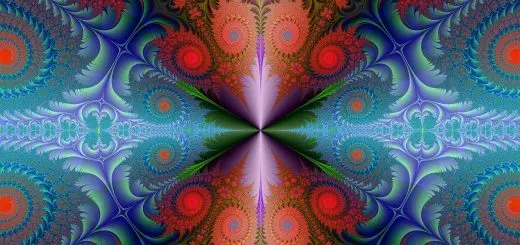Taoist Art and Architecture: Beauty and Spirituality

Looking for more amazing products? Check out our online store and explore our collection here! Happy shopping!
Before diving in, please note: This post is for informational purposes only. If you’d like to know more about how we approach topics, feel free to check out our friendly Disclaimer Page.
Hey there, amazing readers! 
We’re committed to delivering quality posts, and your support (even just sticking around despite the ads) means everything to us. So, bear with us, and thanks for helping us keep the good vibes rolling. Now, on to the fun stuff!
TRANSLATE BUTTON AT THE END OF THE ARTICLE
Introduction to Taoist Art and Architecture
Taoist art and architecture have long been celebrated for their beauty and spirituality.
Rooted in the ancient Chinese philosophy of Taoism, these art forms embody the principles of harmony, balance, and interconnectedness with nature.
From intricate paintings to elaborate temple designs, Taoist art and architecture reflect a deep reverence for the natural world and a profound connection to the spiritual realm.
This article will explore the origins, principles, symbolism, and techniques of Taoist art, as well as the design and layout of Taoist temples, decorative elements, contemporary interpretations, preservation efforts, and the impact of Taoist art on modern design.
Origins of Taoist Art and Architecture
Taoist art and architecture trace their origins back to the philosophical teachings of Lao Tzu and Chuang Tzu, the founding figures of Taoism.
These teachings emphasize living in harmony with the Tao, or the natural way of the universe, and seeking spiritual enlightenment through simplicity and contemplation.
Taoist art often features motifs such as the yin-yang symbol, the five elements, and images of immortals and deities, all of which reflect the Taoist belief in the interconnectedness of all things.
Taoist architecture, on the other hand, is characterized by its use of natural materials, symmetrical layouts, and intricate carvings that evoke a sense of serenity and balance.
Principles of Taoist Aesthetics
Taoist aesthetics are based on the principles of wu wei, or effortless action, and ziran, or natural spontaneity.
In Taoist art, this translates to a focus on simplicity, asymmetry, and the use of negative space to evoke a sense of tranquility and harmony.
Taoist artists often employ subtle colors, fluid brushwork, and delicate lines to capture the essence of the natural world and express the ineffable beauty of the Tao.
In Taoist architecture, the principles of balance, symmetry, and proportion are paramount, with buildings designed to blend seamlessly into their natural surroundings and create a sense of oneness with the universe.
Symbolism in Taoist Art
Symbolism plays a crucial role in Taoist art, with each image and motif carrying deep spiritual significance.
The yin-yang symbol, for example, represents the interplay of opposites and the harmonious balance of forces in the universe.
The dragon, a common motif in Taoist art, symbolizes power, strength, and good fortune, while the phoenix represents rebirth and renewal.
Images of mountains, rivers, and clouds often appear in Taoist art as symbols of immortality, eternity, and the transcendence of earthly concerns.
By incorporating these symbols into their art, Taoist artists seek to convey profound spiritual truths and evoke a sense of awe and wonder in the viewer.
Influence of Nature in Taoist Architecture
Nature plays a central role in Taoist architecture, with buildings designed to harmonize with their natural surroundings and reflect the rhythms of the natural world.
Taoist temples are often located in serene, secluded settings, surrounded by lush gardens, tranquil ponds, and majestic mountains.
The use of natural materials such as wood, stone, and clay helps to create a sense of organic unity between the building and its environment.
Architectural elements such as curved roofs, open courtyards, and intricate carvings are inspired by the forms of nature and seek to evoke a sense of spiritual transcendence and inner peace.
The Role of Spirituality in Taoist Art
Spirituality lies at the heart of Taoist art, with artists and architects seeking to express the ineffable beauty and mystery of the Tao through their creations.
Taoist art is infused with a sense of reverence for the natural world and a deep connection to the spiritual realm.
Through painting, sculpture, and architecture, Taoist artists strive to capture the essence of the Tao and evoke a sense of spiritual awakening in the viewer.
By meditating on the natural world and immersing themselves in the rhythms of the universe, Taoist artists are able to channel the spiritual energies of the Tao and create art that transcends the limitations of the material world.
Traditional Techniques in Taoist Art
Taoist art is characterized by a variety of traditional techniques that have been passed down through generations of artists and artisans.
Ink wash painting, for example, is a popular technique in Taoist art that uses black ink to create subtle shades and textures that evoke a sense of depth and atmosphere.
Calligraphy is another important technique in Taoist art, with artists using brush and ink to create elegant, flowing characters that convey spiritual wisdom and insight.
Sculpture, ceramics, and woodblock printing are also common techniques in Taoist art, each with its own unique methods and styles that reflect the spiritual and aesthetic values of Taoism.
Taoist Temples: Design and Layout
Taoist temples are architectural marvels designed to evoke a sense of awe and reverence in the visitor.
The layout of a Taoist temple is carefully planned to create a harmonious flow of energy and guide the visitor on a spiritual journey.
The entrance of the temple is typically marked by a grand gateway or ornate arch, symbolizing the threshold between the material world and the spiritual realm.
Inside the temple, visitors are greeted by a series of courtyards, halls, and altars dedicated to various deities and immortals, each designed to inspire contemplation, meditation, and worship.
The central hall of the temple, known as the main hall, is typically the most sacred space, housing the main altar and the holiest relics of the temple.
Decorative Elements in Taoist Art
Decorative elements play a crucial role in Taoist art, with artists using a variety of materials and techniques to create intricate and symbolic designs.
Elaborate carvings, colorful paintings, and delicate textiles are common in Taoist art, each imbued with deep spiritual meaning and artistic expression.
Symbols such as the dragon, phoenix, lotus flower, and sacred mountains are frequently featured in Taoist art as expressions of spiritual power, wisdom, and enlightenment.
By incorporating these decorative elements into their art, Taoist artists seek to create a sense of beauty, harmony, and transcendence that elevates the soul and inspires the spirit.
Contemporary Interpretations of Taoist Art
In contemporary times, Taoist art continues to inspire artists and designers around the world, who seek to capture the timeless beauty and spirituality of this ancient tradition.
Contemporary artists often blend traditional Taoist motifs and techniques with modern materials and technologies to create innovative and dynamic works of art.
From multimedia installations to digital animations, contemporary interpretations of Taoist art push the boundaries of creativity and challenge conventional notions of beauty and spirituality.
By reimagining traditional themes in new and exciting ways, contemporary artists are able to keep the spirit of Taoist art alive and relevant in the modern world.
Preservation of Taoist Art and Architecture
The preservation of Taoist art and architecture is of utmost importance in order to safeguard this rich cultural heritage for future generations.
Many Taoist temples, artworks, and artifacts are at risk due to environmental factors, urbanization, and neglect.
Conservation efforts are underway to protect and restore these precious treasures, ensuring that the beauty and spirituality of Taoist art continue to inspire and uplift people around the world.
By raising awareness, funding restoration projects, and promoting sustainable practices, individuals and organizations can help to preserve the legacy of Taoist art and architecture for years to come.
Impact of Taoist Art on Modern Design
The influence of Taoist art can be seen in a wide range of modern design practices, from architecture and interior design to fashion and graphic design.
The principles of balance, harmony, and sustainability that underpin Taoist art have inspired designers to create innovative and environmentally friendly solutions that promote well-being and spiritual connection.
By incorporating Taoist aesthetics into their work, designers are able to create spaces and products that resonate with a sense of tranquility, beauty, and purpose.
The timeless wisdom of Taoist art continues to shape the way we think about design and inspires us to create a more harmonious and sustainable world for all.
Conclusion
In conclusion, Taoist art and architecture are not only symbols of beauty and spirituality but also timeless expressions of harmony and balance.
From the ancient teachings of Lao Tzu to the contemporary interpretations of modern artists, Taoist art continues to inspire and uplift people around the world.
By preserving this rich cultural heritage and incorporating its principles into modern design practices, we can continue to unlock the secrets of Taoist art and architecture and create a more harmonious and sustainable world for future generations to enjoy.

The Enlightenment Journey is a remarkable collection of writings authored by a distinguished group of experts in the fields of spirituality, new age, and esoteric knowledge.
This anthology features a diverse assembly of well-experienced authors who bring their profound insights and credible perspectives to the forefront.
Each contributor possesses a wealth of knowledge and wisdom, making them authorities in their respective domains.
Together, they offer readers a transformative journey into the realms of spiritual growth, self-discovery, and esoteric enlightenment.
The Enlightenment Journey is a testament to the collective expertise of these luminaries, providing readers with a rich tapestry of ideas and information to illuminate their spiritual path.
Our Diverse Expertise
While our primary focus is on spirituality and esotericism, we are equally passionate about exploring a wide range of other topics and niches 

To ensure we provide the most accurate and valuable insights, we collaborate with trusted experts in their respective domains 
Our blog originally focused on spirituality and metaphysics, but we’ve since expanded to cover a wide range of niches. Don’t worry—we continue to publish a lot of articles on spirituality! Frequently visit our blog to explore our diverse content and stay tuned for more insightful reads.
Hey there, amazing reader! 
Check out our store here and take a peek at some of our featured products below! Thanks for being awesome!











